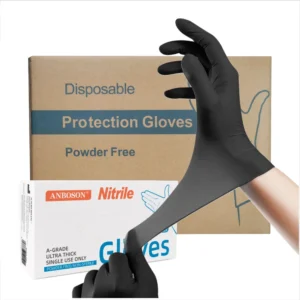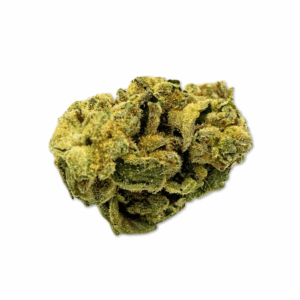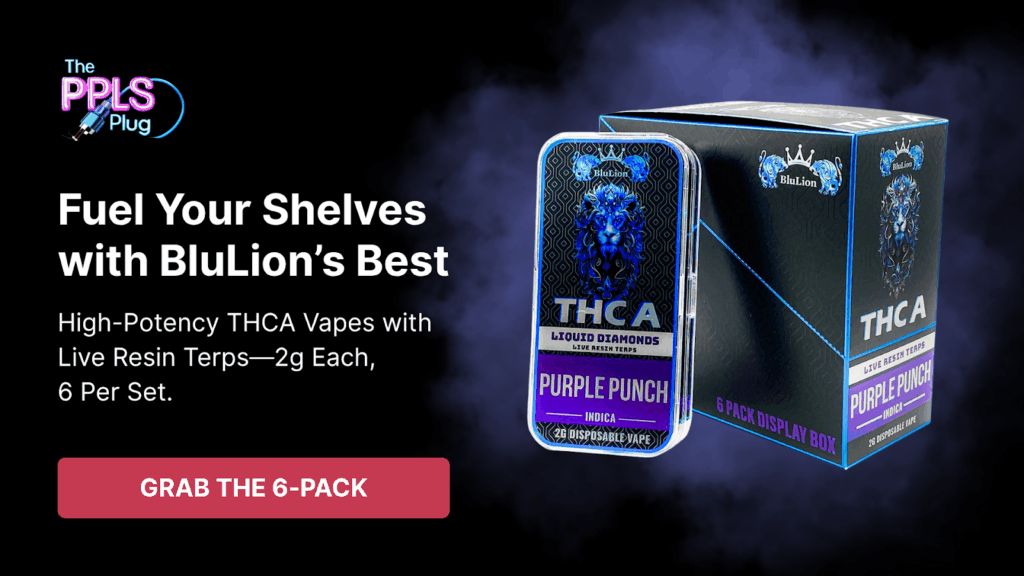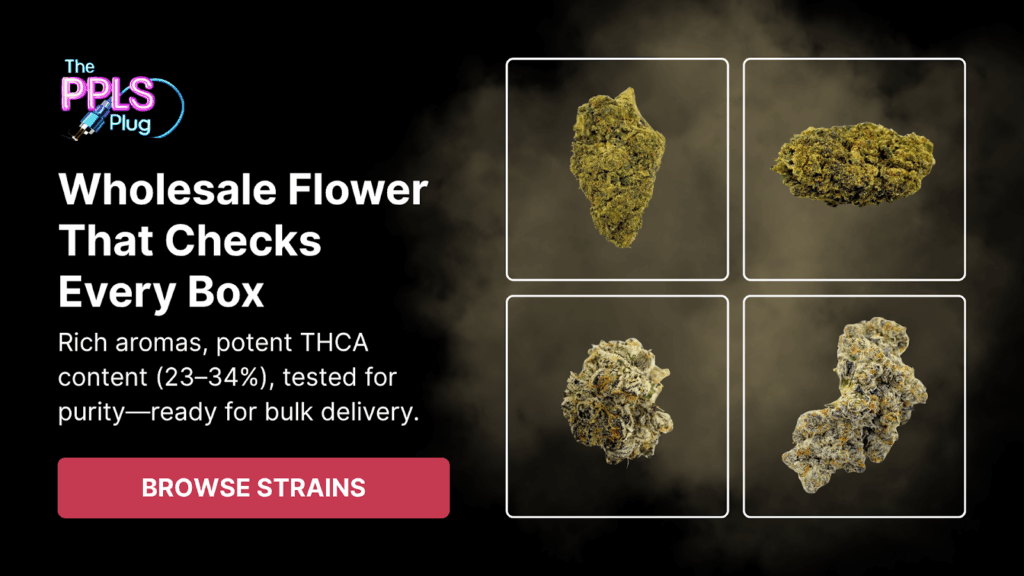The Indica vs Sativa Debate: Does It Even Matter Anymore?
Key Takeaways:
- Botanical Origins: The Indica and Sativa labels started as visual plant classifications, not indicators of effects or experience.
- Modern Irrelevance: Most flower today is hybrid, making the classic Indica/Sativa divide unreliable for predicting how you’ll feel.
- Better Tools: Terpene profiles and cannabinoid content offer more accurate insights for selecting THCA products that fit your needs.
At The PPLs Plug, we’ve earned a reputation for sourcing some of the freshest and most potent THCA flower in the game—no cut corners, no watered-down product lines. Our inventory isn’t for window shoppers. It’s for people who know what they want, what quality should look like, and why clean, bulk-ready hemp isn’t optional. From large-scale resellers to everyday buyers who want top-tier pre-rolls or concentrates without the markup, we stay plugged in so you can stay stocked up.
The cannabis space is full of labels that don’t tell the whole story. One of the most persistent? The Indica vs Sativa divide. You’ve seen it on product menus, in marketing, and maybe even heard it in casual conversation: “Indica is for sleep,” “Sativa is for energy.” But as the hemp industry continues evolving—especially around lab-tested THCA and terpene science—those old categories are looking more like myths than useful tools.
In this piece, we’ll be talking about where the Indica vs Sativa debate came from, why it often leads buyers in the wrong direction, and what you should actually look for when choosing hemp products that work for your life.
Where the Indica vs Sativa Labels Come From
If you’ve ever browsed a menu or product page and seen the words “Indica” and “Sativa,” you’re not alone. These labels have been part of cannabis culture for decades. But while they’ve helped shape how people talk about hemp and cannabis, the truth is: they were never really meant to describe how a product would make you feel.
How the Terms Were First Used
The earliest uses of “Cannabis sativa” and “Cannabis indica” were rooted in botany—not experience. In the 18th century, European scientists were classifying plants based on how they looked and where they grew. “Sativa” referred to tall, narrow-leaf varieties found in Europe and parts of Asia, while “Indica” described shorter, broad-leaf varieties from the Indian subcontinent.
At that point, it was all about physical appearance, not aroma, flavor, or effects.
How the Labels Became Cultural Shortcuts
As cannabis use spread across the world, especially in consumer markets, these terms took on a different meaning. Indica started to suggest sleepy, relaxing effects. Sativa came to mean energy and focus. These associations stuck—even though they had little to do with a plant’s actual chemical makeup.
What’s important to understand now is this: most of the flower on the market today is hybridized. Over decades of crossbreeding for flavor, potency, and growth traits, those original Indica or Sativa lineages have blended. So when a product is labeled “Sativa” or “Indica,” it might reflect a marketing category more than a reliable indicator of how it will affect you.
As The PPLs Plug, we believe understanding your products starts with real information—not outdated terms. It’s why we make lab-tested THCA flower available in options like bulk pounds or wholesale flower selections, so you can focus on what matters: quality and transparency.
What Leaf Shape Tells Us, And What It Doesn’t
If you’ve ever tried to tell the difference between Indica and Sativa just by looking at the leaves, you’re not imagining things—there are visual differences. But that doesn’t mean those differences can predict how you’ll feel after using the flower.
What Morphology Actually Means
Originally, Sativa plants were described as tall with thin, narrow leaves. These varieties developed in regions with long, warm growing seasons. Indica plants, by contrast, were shorter and bushier, with broader leaves—adaptations that helped them survive in colder, mountain regions.
This is the basic morphology that started the Indica vs. Sativa split: appearance and geography. But here’s the catch—those physical traits have nothing to do with the terpene or cannabinoid profile inside the plant.
Why Appearance Falls Short
Let’s say you’re holding two buds: one with narrow leaves and one with broad ones. They could look entirely different and still have nearly identical levels of THCA, CBD, or dominant terpenes like myrcene or limonene. Or it could be the opposite—similar appearance, totally different effects.
That’s why visual cues, while useful for growers, aren’t reliable for consumers. The only way to know how a flower might fit your needs is to review its lab results and chemical makeup.
If you’re sourcing flower for your own shop, your brand, or personal use, checking out our bulk THCA flower or exotic wholesale options is a smart move. Every batch from The PPLs Plug comes with test results—so you’re never guessing based on looks alone.
Why Terpenes Tell You More Than Strain Names Ever Could
A lot of people choose flower based on the name of a strain or whether it’s labeled “Indica” or “Sativa.” But if you really want to understand how a product might affect you, one thing matters a lot more: terpenes.
What Are Terpenes, Really?
Terpenes are natural aromatic compounds found in plants—hemp included. They’re what give each strain its unique scent and flavor. But beyond aroma, terpenes also play a key role in how your body and mind respond to the flower.
Some terpenes are associated with more calming effects, while others are more uplifting. When combined with cannabinoids like THCA or CBD, they can shape the overall experience in powerful ways.
A Few Terpenes You’ll See Often
- Myrcene: Earthy and herbal, often linked to relaxing or sedative experiences.
- Limonene: Bright and citrusy. May offer more focus or energy.
- Linalool: Floral, like lavender. Known for its soothing, mellowing qualities.
- Pinene: Sharp, pine-like aroma. Sometimes associated with clearer thinking or memory support.
What matters most is how these terpenes interact with cannabinoids. For example, a THCA flower high in myrcene might feel heavier than one high in limonene—even if they’re both labeled as “Sativa.”
At The PPLs Plug, we offer THCA concentrates like wax and isolate powder, where terpene presence can be especially noticeable. Whether you’re dabbing, pressing, or mixing your own blends, knowing what’s in your product helps you get closer to what you’re actually looking for.
Tips for Building a THCA Toolkit That Works for You
There’s no one-size-fits-all way to use hemp products—especially when it comes to THCA. Everyone’s routine, preferences, and tolerance levels are different. Building your own toolkit means knowing how to choose the right product, at the right time, for the effects you want.
Start with the Cannabinoid Profile
Ignore the strain name for a second. What’s more useful is looking at the actual lab-tested cannabinoid breakdown. If you’re picking up flower or concentrates, check for how much THCA is present—and whether it’s paired with minor cannabinoids like CBD or CBG. This will give you a better idea of how the product might hit.
We make it easy to explore options in every format, from THCA flower by the pound to bulk pre-rolls, depending on how you like to consume.
Don’t Sleep on Terpene Profiles
As we mentioned earlier, terpenes matter. A THCA pre-roll high in limonene might feel light and creative, while something heavy in myrcene might be better suited for nighttime. If your product includes COAs (Certificates of Analysis), take a look at the terpene section. Patterns will start to emerge once you’ve tried a few.
Try Different Formats
Your toolkit should match your daily rhythm. Some people like the ritual of rolling, others want something fast and potent. The good news is you’ve got options—from flower, concentrates, and pre-rolls, to infused cones and custom blends. Pre-roll cones and tubes are a great way to experiment without committing to large amounts.
Track What Works for You
A simple notes app or journal can make a huge difference. Jot down the strain, how much you used, how it smelled or tasted, and how it made you feel. Over time, you’ll notice patterns: which terpenes click with you, which formats last longer, or what feels best at different times of day.
Final Thoughts
The Indica vs Sativa labels might still be everywhere—from dispensary menus to product packaging—but the truth is, they don’t tell you much about how a product will actually feel.
Leaf shape, plant height, or strain names might hint at a plant’s origin, but they don’t explain what’s inside. What matters more is the chemical profile—how much THCA is present, what terpenes dominate the mix, and how those compounds interact with your body.
At The PPLs Plug, we believe in giving you more than a label. Whether you’re picking up exotic wholesale flower or exploring THCA concentrates in bulk, every product we carry is backed by lab results, real transparency, and quality sourcing. That way, you’re not shopping based on outdated categories—you’re making decisions based on what actually works for you.
Frequently Asked Questions About the Indica vs Sativa Debate
Is it safe to rely on the Indica vs Sativa distinction when buying THCA products?
It’s not unsafe—but it’s also not reliable. The labels offer little insight into the actual cannabinoid or terpene content that determines product effects.
What causes two “Sativa” strains to feel completely different?
Even if two strains share the Sativa label, they can have totally different terpene compositions and cannabinoid concentrations—leading to varied effects.
Are there legal implications tied to Indica vs Sativa labeling?
No. These labels are cultural and not legally defined. What matters more for legality is cannabinoid content, especially THCA vs Delta 9 THC levels.
Why are hybrid strains more common than pure Indica or Sativa types?
Decades of crossbreeding for specific traits like yield, potency, or resistance have led to most flower being hybrids, not true landrace Indica or Sativa.
Does the Indica vs Sativa debate apply to all hemp-derived cannabinoids?
Not really. The terms originally described cannabis plants broadly. Today’s hemp-derived THCA, Delta 8, or CBD products should be evaluated by profile, not label.
How can I know if a “Sativa” product won’t cause anxiety or overstimulation?
Check the terpene profile. High limonene or THCV might feel stimulating, while balanced or myrcene-rich profiles may ease that edge—even in “Sativas.”
What should I prioritize when selecting flower from a new brand or supplier?
Look for third-party lab tests showing cannabinoids and terpenes. This gives you more useful information than the Indica or Sativa classification.
Are there visual cues that still help identify potential effects?
Not consistently. While some growers use leaf shape as a clue, the only reliable method for predicting experience is reviewing lab-tested compound data.
Can different consumption methods affect how “Indica” or “Sativa” effects hit?
Yes. Smoking, vaping, or consuming THCA via concentrates can change how fast and how strongly the cannabinoids and terpenes impact your body.
Is it worth educating budtenders or buyers about the limits of Indica vs Sativa?
Definitely. Conversations about terpenes and full-spectrum cannabinoid profiles help everyone make more informed choices, especially in bulk or wholesale markets.
Latest Products
-
 Rated 0 out of 5Out of stockSelect options This product has multiple variants. The options may be chosen on the product pageLog In to see prices
Rated 0 out of 5Out of stockSelect options This product has multiple variants. The options may be chosen on the product pageLog In to see prices -
 Rated 0 out of 5Sale!Select options This product has multiple variants. The options may be chosen on the product pageLog In to see prices
Rated 0 out of 5Sale!Select options This product has multiple variants. The options may be chosen on the product pageLog In to see prices -
 Rated 0 out of 5Out of stockSelect options This product has multiple variants. The options may be chosen on the product pageLog In to see prices
Rated 0 out of 5Out of stockSelect options This product has multiple variants. The options may be chosen on the product pageLog In to see prices -
 Rated 0 out of 5Out of stockSelect options This product has multiple variants. The options may be chosen on the product pageLog In to see prices
Rated 0 out of 5Out of stockSelect options This product has multiple variants. The options may be chosen on the product pageLog In to see prices



